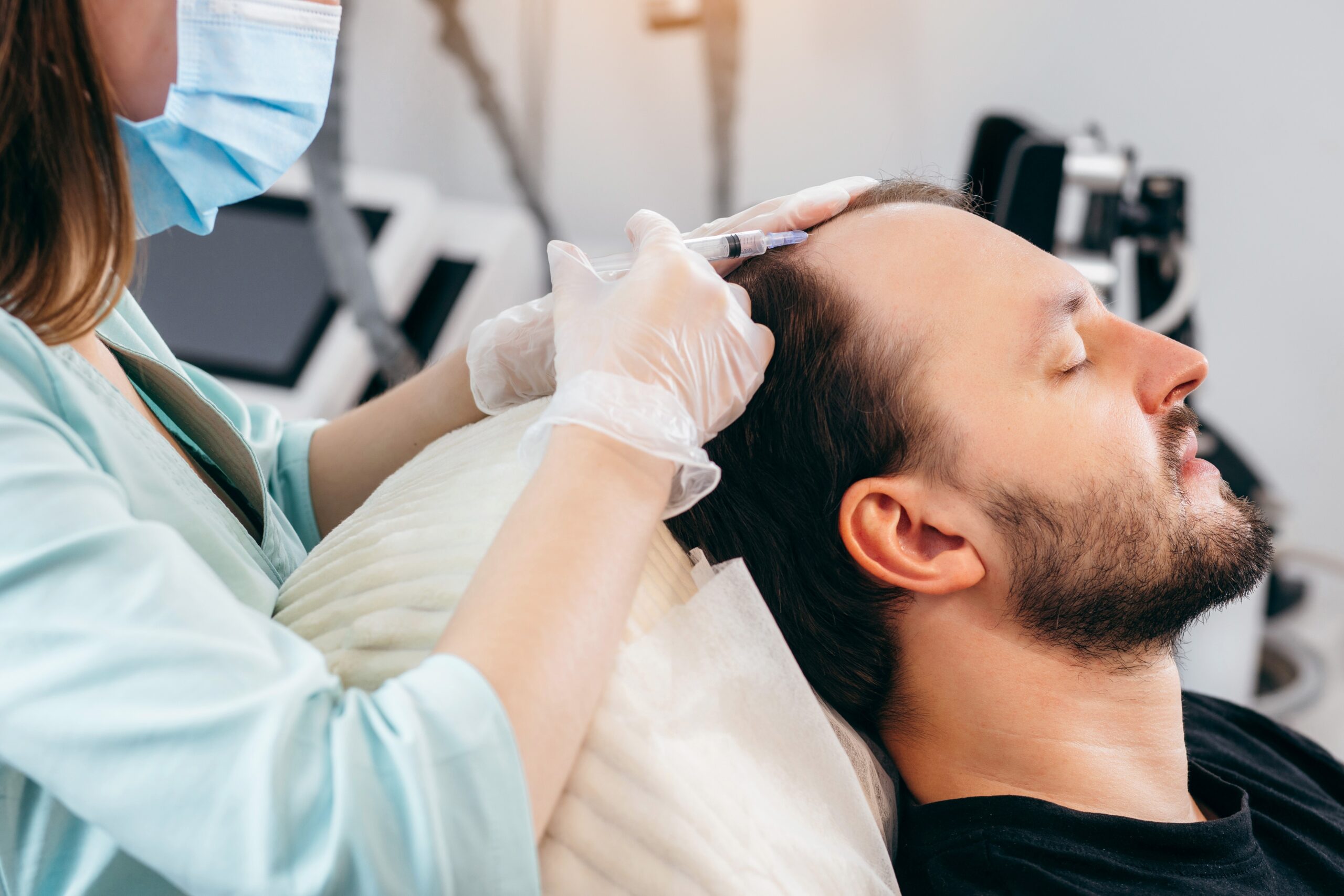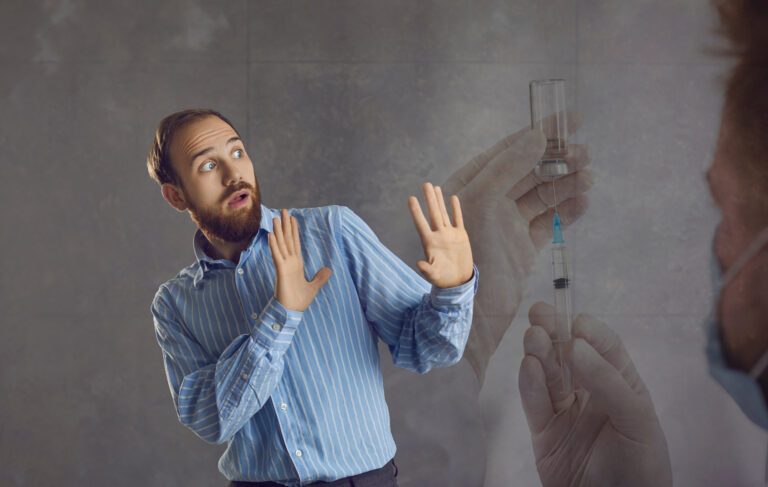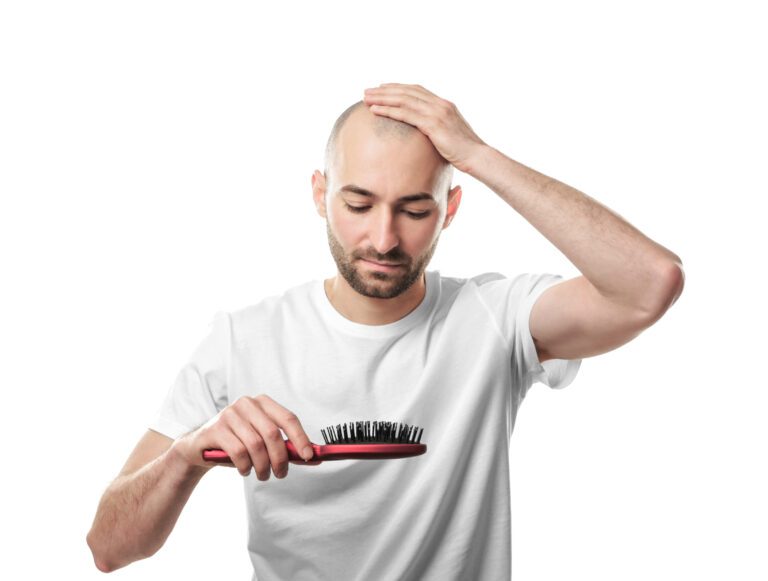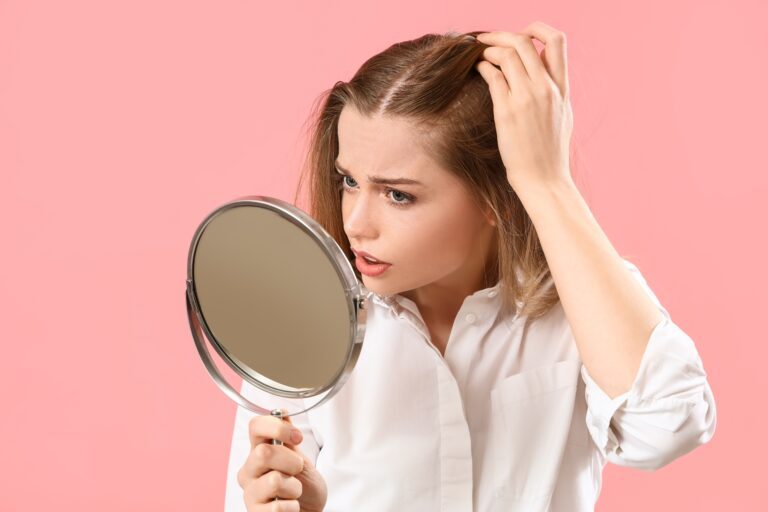PRP for Hair Loss: A Comprehensive Guide
Hair loss affects millions of people around the world and is a common concern for both men and women. While this condition can be caused by a huge variety of reasons, the main factors here are typically genetics, hormonal changes, and aging.
While hair loss can be frustrating, there are plenty of new treatment options that can help people slow down this progressive condition and even regrow hair, and one of these promising treatments is Platelet-Rich Plasma or PRP.
In this article, you’ll find a comprehensive guide for PRP therapy, explaining how it works, the benefits it might offer, and what to expect during the treatment process, so you can decide whether it’s a suitable option for your needs.
What Is PRP Injection Therapy?
PRP or platelet-rich plasma injection therapy is a treatment that leverages your body’s own healing and cell regeneration properties to stimulate hair growth and treat alopecia.
As the name suggests, this treatment technique relies on components from the blood to function, which are:
- Plasma: The main liquid component of the blood that carries all other blood cells, which make up around 55% of the blood volume.
- Platelets: Tiny blood cells that specialize in wound healing, immune response, and blood coagulation, thanks to their clotting properties.
The PRP injection is a procedure done through single or multiple sessions, depending on the case severity and doctor’s recommendations.
The procedure is considered minimally invasive and usually includes anesthesia as a part of the process.
How Does PRP Work?
Since PRP is a relatively new treatment method for hair loss, there are plenty of studies out there that try to understand the inner workings of this treatment.
Besides the main functions of platelets, it was discovered that they contain unique proteins and granules that can stimulate cell regeneration and rejuvenation. These proteins are collectively known as “growth factors”.
The idea of this treatment is to create a serum of blood with a relatively high concentration of platelets and inject it directly into the scalp to stimulate the tissues and hair follicles in the area to regenerate and regrow, reversing the effects of hair loss and alopecia.
Other Uses for PRP Injection Therapy
Besides stimulating hair regrowth, the regenerative potential of PRP injections is used to treat and alleviate a wide range of conditions all over the body, including:
However, you should note that PRP therapy is still considered an emerging treatment. This means that it still has a lot of extensive research ahead to confirm its effectiveness for these different applications.
A Brief Breakdown of the PRP Hair Treatment Procedure
Now that you know more about how PRP works, you might be wondering how the procedure of the treatment goes, so here’s what you should expect during a PRP session for hair loss.
Step 1: Blood Draw
A healthcare professional will draw a small amount of blood, which is typically from your arm using a syringe. The total amount of blood drawn is usually quite small (between 30 to 60 ml or 1 to 2 fl oz.)
Step 2: Separating Blood Components
To increase the concentration of platelets in the blood, the blood is placed in a machine that spins rapidly to separate fluids based on density.
This separates the drawn blood into several layers, including the platelet-rich plasma layer in the middle. This layer is then isolated and prepared for injection while discarding other components.
Step 3: Numbing and Microneedling
While the platelet-rich layer is separated and isolated, healthcare professionals will prepare the scalp area for injection.
To minimize discomfort associated with injections, a local anesthetic cream is usually applied to the scalp.
Besides numbing, some clinics will also apply a derma roller to the scalp to enhance the results of the PRP injection by increasing its absorption rate. However, this step isn’t a core part of the treatment, so it may slightly vary from one clinic to another.
Step 4: Injection
Lastly, when the platelet-rich plasma is ready, it will be injected subdermally (under the skin) in multiple sites into the scalp where hair follicles are thinning or falling off.
The injection process is done using a tiny intradermal needle by a qualified dermatologist to ensure safety and that the plasma covers all the sites that need injection.
Is PRP Hair Loss Treatment Effective?
Platelets-rich plasma has been gaining a lot of attention recently as a growing treatment for hair loss as well as other conditions.
While the research on the effectiveness of the treatment is still in its initial stages, the latest findings regarding its results are quite promising.
One of the biggest studies that assessed the effectiveness of this treatment technique was done in 2014. The study observed a noticeable decrease in hair loss between the first and fourth injections.
The improvement was also accompanied by a positive increase in hair count as well as a stronger hold of hair follicles.
Additionally, an in-depth systematic review also suggests that PRP injections are highly effective when it comes to hereditary hair loss.
Another randomized controlled trial that also tested the effects of PRP was conducted in 2015. In the study, scientists compared treated scalps to untreated scalps and found the treated areas had more growth with thicker follicles and minimal side effects.
Another review of several studies in 2019 shows that PRP displayed positive results across a variety of smaller studies with little downtime and side effects.
However, the study also mentioned that the results and effectiveness level of the treatment varied across studies. This is mainly due to two aspects: lack of standardization and individual differences between people regarding response to such treatment.
You should also note that other studies that focused on the long-term effectiveness of the treatment show that the results of PRP start diminishing a year after the treatment, although they remained better than the pre-treatment hair count.
Results and Expectations After PRP Treatment
Understanding what to expect after platelet-rich plasma treatment is an essential part of the process, so here are some essential points to keep in mind regarding PRP injections.
Session Duration
A typical PRP session for treating hair loss should take anywhere between 45 and 90 minutes to complete.
This involves drawing your blood, processing it to concentrate the platelets, and then injecting it into your scalp. The variation in time depends on several factors, including the severity of hair loss and whether there are extra steps like microneedling.
Of course, added wait time might extend your downtime for the day but you can avoid that by scheduling your appointment with the clinic.
Post Session Discomfort
PRP is typically a painless procedure and most clinics will use local anesthetic creams to numb the area during injection.
However, depending on your tolerance of pain, you might experience some post-session discomfort, which usually fades away within a few hours to a day. Doctors might also suggest some over-the-counter painkillers to alleviate the pain.
Number of Sessions and Improvements
One thing to know here is that you won’t notice any improvements right away after your first session.
That being said, the treatment is highly effective in the long run, so you’ll typically start seeing results after a few weeks of continuous therapy.
Currently, studies are yet to standardize the frequency or the number of sessions for PRP, so the treatment plan will vary according to the clinic you’re dealing with.
However, many clinics nowadays recommend a session every 2 to 4 weeks for anywhere between 6 to 12 months.
Consistency and Maintenance of Results
Although PRP injections might take some time and several sessions, the results of the hair loss treatment last much longer.
Yet, this too is subject to various aspects, as some people maintain their results for as little as 6 months after treatment while others maintain it for much longer (up to 24 months). The most common average here is between 12 to 18 months.
Besides individual differences, some studies highlight the number of platelets in PRP as a key factor behind this variation, suggesting that a higher number doesn’t only lead to a higher hair count and quality, but also longer-lasting results.
How Much Does PRP Hair Treatment Cost?
Generally speaking, you should expect a single session of platelet-rich plasma injection to cost you around $400 to $600.
However, a single session is usually not enough to provide any results. At least, you would typically need around 3 to 4 sessions over the course of 4 to 6 weeks. This means that the total cost of the treatment is around $1,600 to $3,500.
The Advantages of PRP Hair Loss Treatment
Here are some of the main reasons why you might want to consider platelet-rich plasma as a treatment for hair loss:
Minimally Invasive Treatment
Although PRP involves some needles and injections, it’s still a minimally invasive treatment when you compare it to hair transplant surgery.
Most injections in PRP are done subdermally with very thin needles and it doesn’t involve the downtime and discomfort associated with hair transplant.
Little to No Side Effects
Since PRP uses your own blood, you don’t have to worry about the risk of allergic reactions or bloodborne communicable infections during injections.
This makes it a suitable option for those who are hesitant about synthetic substances or surgical procedures.
Additionally, unlike hair loss treatment medications like finasteride and dutasteride, PRP is not associated with any side effects or hormonal disturbances.
Promotes Hair Quality
As previously established, PRP’s efficacy was highly established when it comes to preventing hair loss.
Not only that, but many of the studies also indicated that the thickness and quality of the hair follicles also improved after using platelet-rich plasma.
Fairly Long-Term Results
While research isn’t exactly sure how long PRP results last, it’s fairly established that a full plan over the course of several sessions can stay effective for up to 2 years after treatment.
Can Be Combined with Other Treatments
PRP can be used as a standalone treatment to improve hair quality or combined with other hair loss solutions like medications or derma rolling to increase their overall effectiveness.
This is because the platelet-rich platelets will promote faster hair growth and revitalize the follicles, making them more responsive to treatment.
The Downsides of PRP Hair Loss Treatment
Despite all its merits, PRP is not a perfect hair treatment, so here are some points to consider before making up your mind about this treatment:
Costly and Rarely Covered by Insurance
Although PRP is not a surgical procedure, it is still considered a bit costly, especially when you consider the cheaper and more readily available alternatives.
The problem here is that these treatments are usually paid out-of-pocket because they’re cosmetic, and therefore, not covered by insurance.
Painful Compared to Medications
While minimally invasive, PRP does involve injections into the scalp, which can cause some discomfort.
Although numbing cream can help alleviate some of that pain, it’s not entirely painless compared to simply taking a medication.
Doesn’t Last Forever
The effects of PRP are long-lasting but they’re not permanent. This means that you’ll still need to attend touch-up sessions and injections to maintain your results.
Who Is a Good Candidate for PRP Hair Treatment?
PRP hair loss treatment is suitable for all people suffering from hair loss. However, those in the early stages of baldness may benefit the best from its results.
It’s also ideal for those who suffer intense adverse effects after using other hair loss treatments, such as medications.
Final Thoughts
This wraps it up for today’s guide about platelet-rich plasma and how it helps in treating hair loss.
As you can see, PRP is a highly promising treatment that offers remarkable, long-term results despite being a bit pricey.
It also has little to no side effects which makes it perfect for those who are hesitant to start their hair loss treatment plan for fear of side effects.
That being said, make sure that you seek professional medical advice from your doctor to find out if this procedure is suitable for your needs.







